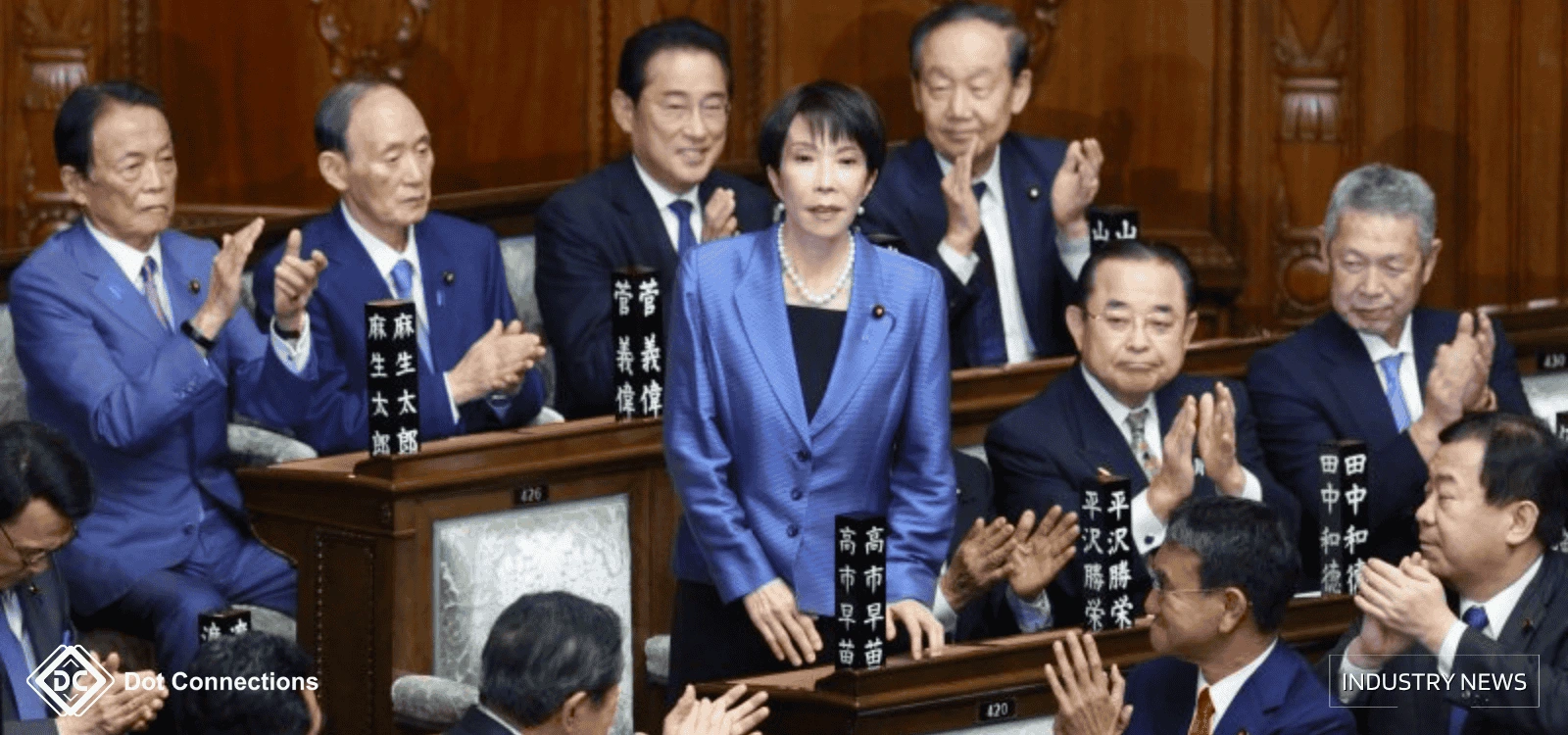
Published: October 27, 2025
Japan integrated resort casino policy is back on the national agenda under Prime Minister Sanae Takaichi - the Japan's first female Prime Minister as of October 21, 2025. Her administration is signalling support for large-scale Integrated Resort (IR) casino projects as part of an economic growth strategy. This shift could restart licensing for up to two additional IRs beyond the already approved MGM Osaka project, a nearly USD $9B resort targeting a 2030 opening on Yumeshima Island in Osaka.
Sanae Takaichi was elected Prime Minister of Japan on October 21, 2025, after winning 237 out of 465 votes in the House of Representatives, making her the first woman to hold the office in Japan’s history.
Takaichi’s Liberal Democratic Party (LDP) entered into an alliance with the Japan Innovation Party to secure control of government following the resignation of former Prime Minister Shigeru Ishiba. Analysts describe the coalition as politically fragile, given how narrow the majority is and how recently it was formed.
In her first statements as Prime Minister, Takaichi framed her agenda around economic recovery, stability, and growth. She announced plans for a new national “growth strategy” effort and positioned tourism-driven development as part of that recovery narrative.
This matters because the Japan integrated resort casino framework depends on central government momentum.
One of Takaichi’s first reported directives was instructing the new Minister of Land, Infrastructure, Transport, and Tourism to actively “promote the development of IRs.” That ministry oversees tourism policy and the regulatory process around casino-integrated resorts. This is widely read in the market as a signal that the central government intends to restart proactive IR development rather than allow it to stall at the local level.
Integrated Resorts (IRs) in the Japanese context are large-scale, high-end tourism hubs that combine:
Japan legalized IR casinos in 2018 and authorized up to three licenses nationwide. So far, the national government has only approved one site: Osaka. Major global operators such as Las Vegas Sands, Wynn Resorts, Hard Rock International, and Melco Resorts previously withdrew from contention during earlier bidding rounds, citing regulatory uncertainty, infrastructure questions, and political risk. The expectation under the new administration is that a fresh licensing round could now return to the table.

MGM Osaka is the flagship project and currently the only fully approved IR in Japan. The resort is being developed by MGM Resorts International and Orix Corporation on Yumeshima Island, an artificial island in Osaka Bay that also serves as the site of Expo 2025. Construction officially began in April 2025.
Osaka Prefecture and the project partners have also discussed transport upgrades, including a planned rail link to connect Yumeshima directly to central Osaka, in order to handle year-round convention and tourist traffic.
Forecasts project roughly 20 million visitors per year once MGM Osaka is fully operational. Local and national officials frame the resort as a core tourism engine that can attract both domestic visitors and high-spending international guests, positioning Osaka as a direct competitor to Macau and Singapore in the premium leisure and convention segment.
To limit problem gambling and signal social responsibility, Japanese residents will face a paid entry system to access the casino floor. Entry fees for locals have been proposed in the ¥3,000 range (about USD $20), with higher fees for Osaka residents, and strict visit limits. This mirrors Singapore’s model rather than a Las Vegas–style open access model.

Japan’s IR framework allows up to three total licenses nationwide. At the moment, Osaka is the only approved site. A new bidding window would redefine the Japan integrated resort casino map beyond Osaka.
Under Prime Minister Takaichi, industry observers expect Tokyo to re-check which prefectures are willing to host an IR, instead of relying on the purely bottom-up, prefecture-led proposals that dominated the first round. Some reporting has already pointed to renewed interest in potential sites such as Kanagawa Prefecture (including Yokosuka, south of Tokyo), which promotes its logistics access and existing infrastructure.
A rebooted bidding process would matter to global operators that stepped away in earlier rounds. During the first wave of interest (2018–2023), major casino groups including Las Vegas Sands, Wynn Resorts, Hard Rock International, and Melco Resorts explored Japan and then paused or withdrew as national approvals dragged and local political resistance intensified. A clearer timetable under a new Prime Minister could bring those players, or new strategic partners, back to the table.
The policy direction is shifting. Takaichi has publicly tied economic revival and national competitiveness to structural tourism assets, and her administration is signalling that IR casinos are one of those assets. Industry players now treat the Japan integrated resort casino market as an executable timeline, not a hypothesis.
For the casino and gaming sector, for hospitality groups, and for MICE operators, Japan is moving from a long-running “watch and wait” scenario to an executable timeline:
In short, Japan is positioning IRs not just as casinos, but as national-scale economic infrastructure. The first site, MGM Osaka, is already under construction. The fight for sites two and three could define Japan’s land-based gaming and high-end tourism market for the next decade.
At Dot Connections, we track policy shifts and disruptive trends shaping the iGaming and online entertainment landscape worldwide. From compliance challenges to new market entries, our team delivers the intelligence operators and providers need to stay competitive.
🌍 If you’re planning to expand into dynamic markets in Asia, Africa, or Europe, our experts are ready to support your journey.
Follow Dot Connections for regulatory updates, market analysis, and strategic guidance on the future of iGaming.